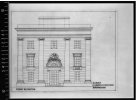-
Welcome to this forum . We are a worldwide group with a common interest in Birmingham and its history. While here, please follow a few simple rules. We ask that you respect other members, thank those who have helped you and please keep your contributions on-topic with the thread.
We do hope you enjoy your visit. BHF Admin Team -
HI folks the server that hosts the site completely died including the Hdd's and backups.
Luckily i create an offsite backup once a week! this has now been restored so we have lost a few days posts.
im still fixing things at the moment so bear with me and im still working on all images 90% are fine the others im working on now
we are now using a backup solution
You are using an out of date browser. It may not display this or other websites correctly.
You should upgrade or use an alternative browser.
You should upgrade or use an alternative browser.
DavidGrain
master brummie
The Turnpike trusts were abolished in 1888 so the reference to toll gates would imply before this date but locals might have continued to refer to the location of toll gates after this date
Lloyd
master brummie
The track far right is triple gauge, were they 4'8½" (British standard), 5'3" (Irish standard) and 7'¼" (Great Western broad) gauges?A print of Curzon Street , Titled ‘The First Railway Passenger Station in Birmingham (1838) source Historicengland.org.uk
That is the only conclusion that I could come to, but cannot find any evidence that the GWR, ever ran Broad gauage into Curzon St. There were parliamentary bills to this effect, and the Duddeston viaduct was built with this in mind, but never completed. I wonder if this was artist's licence
Lloyd
master brummie
Forget it ! I was looking at an enlarged version which hid the fact of two tracks crossing in the foreground! All are normal 4'8½" gauge tracks.That is the only conclusion that I could come to, but cannot find any evidence that the GWR, ever ran Broad gauage into Curzon St. There were parliamentary bills to this effect, and the Duddeston viaduct was built with this in mind, but never completed. I wonder if this was artist's licence
Covroad
master brummie
izzy eckerslike
master brummie
I spent hours in there in the 1950's, dad used to deliver BR parcels in Rubery & Barnt Green area and in the school holidays I often used to go with him. While he sorted out the order of the parcels at Curzon St I used to wander around, I remember gigantic curtains that could be used to block out the weather on the huge doorways, some let the daylight through and others were solid tarpaulins
I remember one foggy winter morning I wandered further than usual and vividly remember looking through a gap and seeing a whole row of ghostly looking disused steam engines with cow scoops on the front, like the wild west engines, maybe used for clearing heavy snow off the tracks?
I remember one foggy winter morning I wandered further than usual and vividly remember looking through a gap and seeing a whole row of ghostly looking disused steam engines with cow scoops on the front, like the wild west engines, maybe used for clearing heavy snow off the tracks?
Last edited:
Heartland
master brummie
In the Science Museum of images of Curzon Street there is one captioned Curzon Street Viaduct. Not all the plans there were carried forward and this one seems not to have happened and the London & Birmingham Railway build a level crossing instead to reach their goods yard
DavidGrain
master brummie
Can you give us more details please as this sounds as if it might be the viaduct from Bordesley which was never completed.In the Science Museum of images of Curzon Street there is one captioned Curzon Street Viaduct. Not all the plans there were carried forward and this one seems not to have happened and the London & Birmingham Railway build a level crossing instead to reach their goods yard
Heartland
master brummie
in 1841 the Grand Junction Station buildings faced Curzon Street whilst the London & Birmingham building had its entrance from New Canal Street. Camp Hill Station, Birmingham & Gloucester Railway was also in existence by then. The railway from Camp Hill to Join up with the London & Birmingham Railway was opened August 17th, 1841 when Camp Hill became a goods station.







